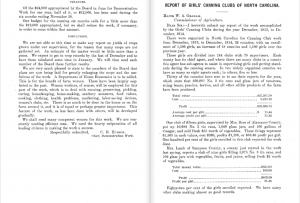
Pg 91, Biennial Report of the Commissioner of Agriculture. Raleigh, NC: E. M. Uzzell & Co., State Printers and Binders, 1914.
The chapter in American Appetites, “Eating in the Age of Decadence,” describes a period of time in America characterized by the impacts of the second industrialization revolution in the late ninetieth and early twentieth centuries. The economic boom that occurred as a result of new manufacturing technologies enabled upper class and urban middle-class Americans to indulge in new ways that influenced their food habits and dining culture. A largely untold part of this chapter of America’s food story involves the labor efforts behind the expanding and luxurious foods consumed by the wealthy class at this time.[i] While new industrial jobs drew large populations of people to urban areas, the majority of agricultural labor remained in rural, less developed areas of the country.
Pages 91-96 of The Biennial Report of The Commissioner of Agriculture of North Carolina report the activity and profits of the Girls Canning Clubs of North Carolina from December 1913-December 1914. These pages report the organization of Girls Canning Clubs in over 18 North Carolina counties, several of which are located near Chapel Hill, or just outside Orange County[ii]. Canning clubs became popular in rural areas to teach working and lower class women and girls methods of food preservation. The clubs also sold canned foods for profit, giving women further means to support working class families that could not afford the decadence of the upper class. [iii]
While this source might not plainly say much about the types of food consumed during the “Age of Decadence,” it refers to the agricultural practice of canning and preserving food. The Girls Canning Clubs are also significant as they allude to other social movements of the time, such as early efforts of women to become financially independent. In this way the food story involving Chapel Hill and its neighboring regions is intertwined with other social and political movements of the time, and throughout American history.
[i] Wallach, Jennifer & Swindall, Lindsey. American Appetites. Fayetteville: The University of Arkansas Press, 2014.
[ii] Graham, William A. Biennial Report of the Commissioner of Agriculture. Raleigh, NC: E. M. Uzzell & Co., State Printers and Binders, 1914.
[iii] Pronovost, Emily. “Special Collections Research Center : Green ‘N’ Growing – The History of Home Demonstration and 4-H Youth Development in North Carolina.” Accessed October 10, 2018.
Natalie Huggins